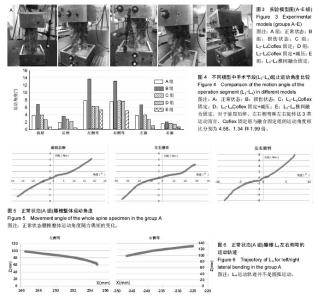| [1] 王振林,黄培培,焦海斌,等.Coflex与融合治疗腰椎管狭窄症的中期疗效及对相邻节段退变影响的对比观察[J]. 中国矫形外科杂志,2016,24(1): 24-29.[2] Gum JL, Reddy D, Glassman S. Transforaminal Lumbar Interbody Fusion (TLIF). JBJS EssentSurg Tech.2016, 6(2): e22.[3] 梁昌详,昌耘冰,詹世强,等.Coflex植入术与腰椎椎间融合术治疗L4/5腰椎退变性疾病的临床疗效对比[J].中国临床解剖学杂志, 2014,32(1): 98-101.[4] 凌仕勇,贾连顺.融合与非融合治疗腰椎管狭窄症疗效和安全性对比[J].现代仪器与医疗,2016,22(3): 31-33.[5] 梁昌详,昌耘冰,沈梓维,等.椎管减压棘突间Coflex置入术治疗L4/5退变性腰椎管狭窄症的5年随访结果[J].中国脊柱脊髓杂志,2014, 24(12): 1072-1078.[6] 顾叶.椎棘突间动态稳定系统CoflexTM的生物力学研究和临床应用[D]. 苏州大学, 2011. [7] Talwar V, Lindsey DP, Fredrick A, et al. Insertion loads of the X STOP interspinous process distraction system designed to treat neurogenic intermittent claudication. Eur Spine J.2006; 15(15): 908-912.[8] Park S. Minimum 2-Year Follow-Up Result of Degenerative Spinal Stenosis Treated with Interspinous U (CoflexTM). J Korean Neurosurg Soc.2009;46(46): 292-299.[9] 罗俊男.Coflex动态固定与腰椎后路椎间融合内固定术治疗腰椎退行性疾病的效果分析[J]. 中国医学工程,2017,25(3):43-45.[10] 祖丹,海涌,云才,等.腰椎棘突间动态稳定装置Coflex不同置入深度对相邻节段运动范围影响的生物力学研究[J].中国脊柱脊髓杂志, 2014, 24(10):933-937.[11] Tsai KJ, Murakami H, Lowery GL, et al. A biomechanical evaluation of an interspinous device (Coflex) used to stabilize the lumbar spine. J SurgOrthopAdv 2006; 15(3):167-172.[12] 李忠海. 腰椎融合联合Coflex动态固定手术治疗腰椎退行性疾病[J]. 中国骨伤, 2011, 24(4): 277-281.[13] 藏磊, 海涌, 苏庆军, 等.棘突间动态稳定装置Coflex植入并发症的探讨[J]. 中华外科杂志, 2012, 50(9): 782-787.[14] 张恩泽,廖振华,刘伟强.人体脊柱生物力学特性的研究方法及进展[J].中国组织工程研究,2016,20(48):7273-7279.[15] Coronado RA,George SZ,Devin CJ,et al.Pain sensitivity and pain catastrophizing are associated with persistent pain and disability after lumbar spine surgery.Arch Phys Med Rehabil. 2015;96(10) : 1763-1770.[16] Høy K, Bünger C, Niederman B, et al. Transforaminal lumbar interbody fusion (TLIF) versus posterolateral instrumented fusion (PLF) in degenerative lumbar disorders: a randomized clinical trial with 2-year follow-up. Eur Spine J. 2013;22(9): 2022-2029.[17] 徐教.微创腰椎经椎间孔椎体间融合术采用不同内固定方式的生物力学研究[D].中国人民解放军医学院.2014.[18] 张杰超,张子峰,汤伟忠.腰椎Coflex系统的应用及术后相关研究进展[J].医学综述,2016,22(15):2975-2977.[19] 卢中道,梅伟,杨勇,等. Coflex棘突间动态内固定治疗腰椎管狭窄症临床研究[J].医学与哲学,2013,34(3B):33-35.[20] 吴信雷,吴立军,郑蓉梅,等. 下腰椎L4 /5与L5/S1节段Coflex动态固定的有限元模型试验设计[J]. 医用生物力学,2014,28(5): 477-483[21] 林周胜,陈建庭,朱青安.脊柱后路经椎弓根螺钉动态固定系统的临床应用及生物力学研究进展[J].医用生物力学, 2013, 28(6): 684-689.[22] 林军,钟玉平,胡正平,等.腰椎棘板螺钉动态内固定系统的生物力学研究[J].浙江创伤外科,2016, 21(1):5-8.[23] Kong C, Lu S, Hai Y, et al. Biomechanical effect of interspinous dynamic stabilization adjacent to single-level fusion on range of motion of the transition segment and the adjacent segment. ClinBiomech (Bristol, Avon). 2015; 30 (4): 355-359[24] 肖进飞. Dynesys动态内固定与融合术治疗L4-5单节段退变疾病的疗效对比[J].山西医科大学,2015.[25] 赵赫,俞兴,唐向盛,等.Wallis与Coflex两种棘突间动态稳定系统修复腰椎退行性疾病的Meta分析[J].中国组织工程研究,2017, 21 (11):1798-1804.[26] Panjabi MM, Crisco JJ, Vasavada A, et al. Mechanical Properties of the Human Cervical Spine as Shown by Three-Dimensional Load-Displacement Curves. Spine. 2001; 26(24): 2692-2700. |

